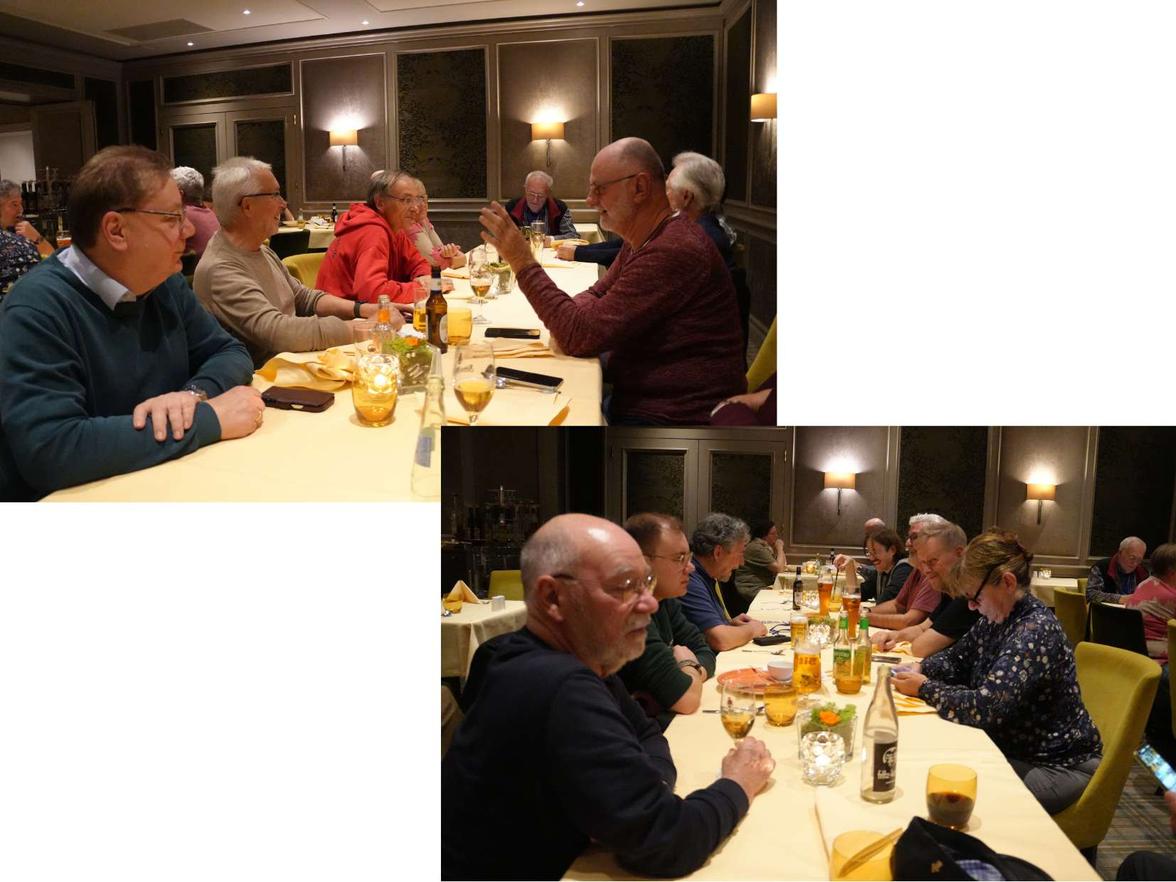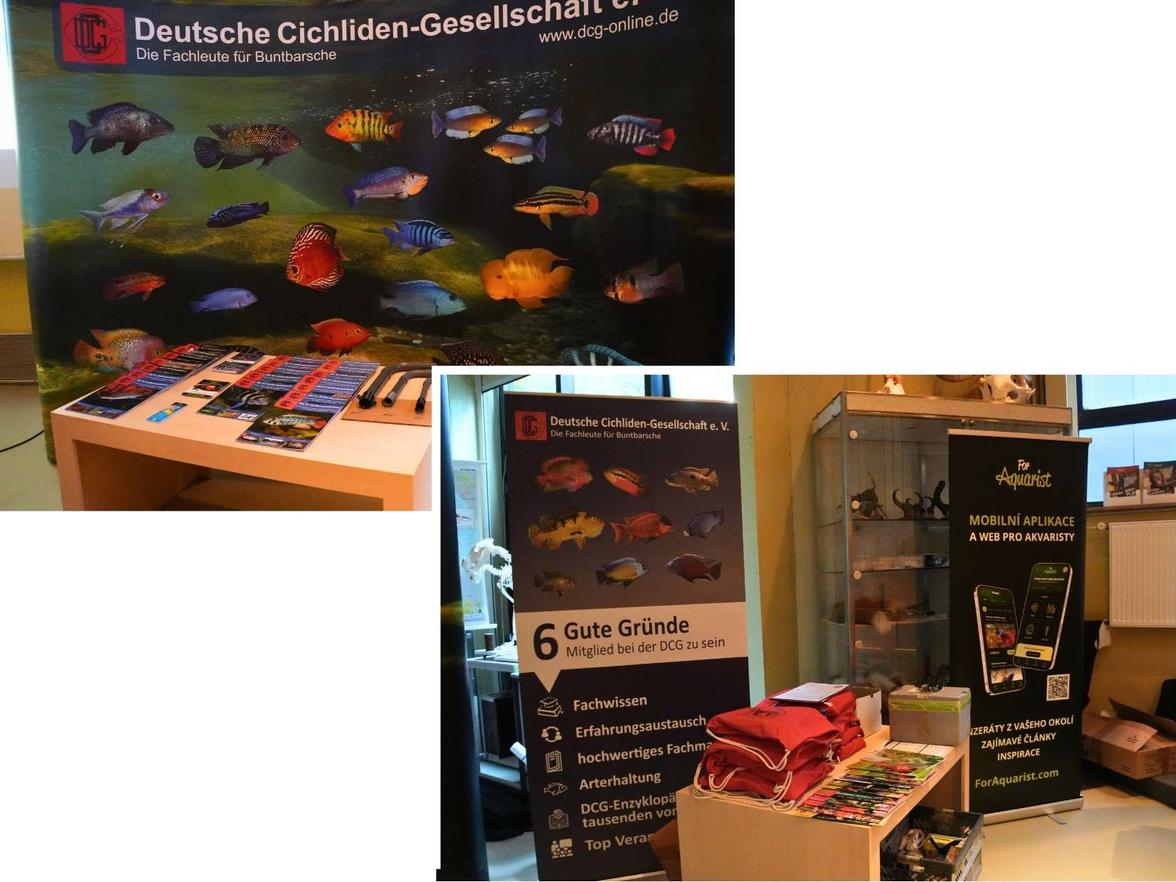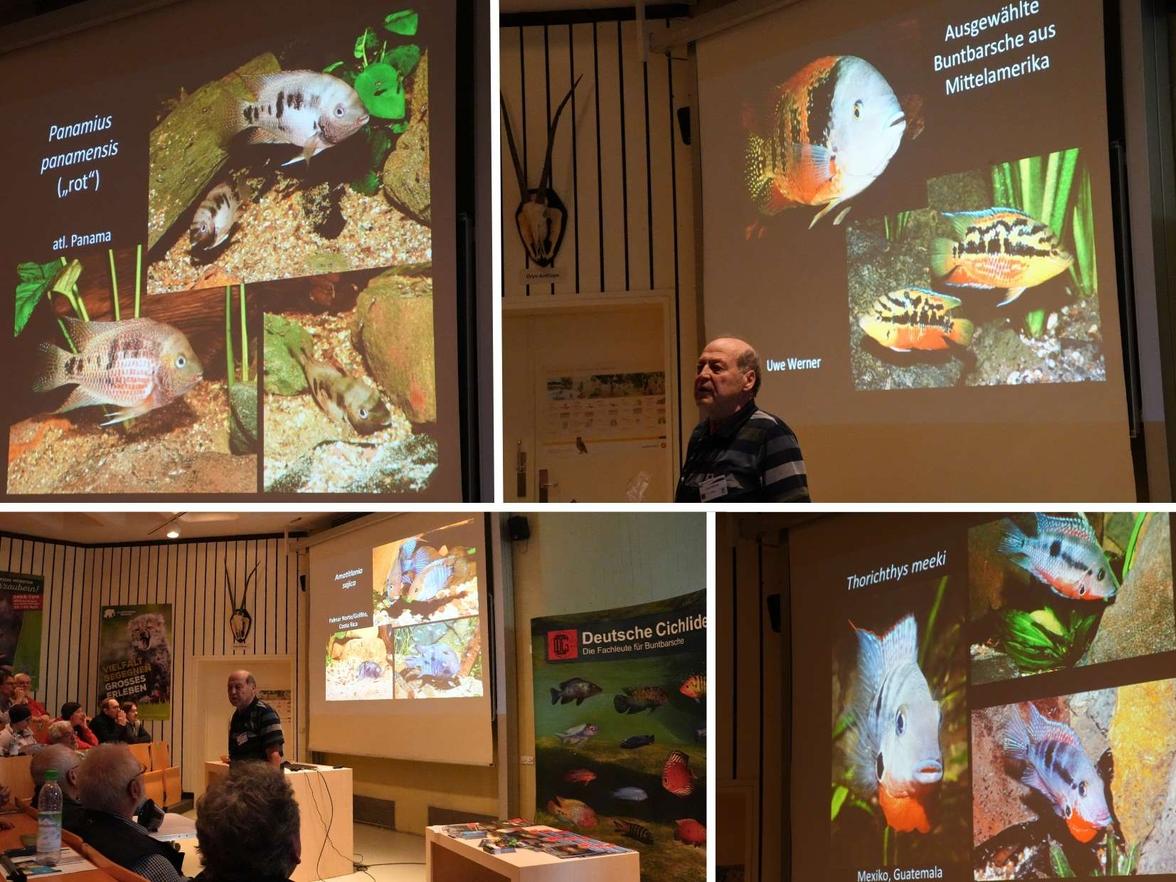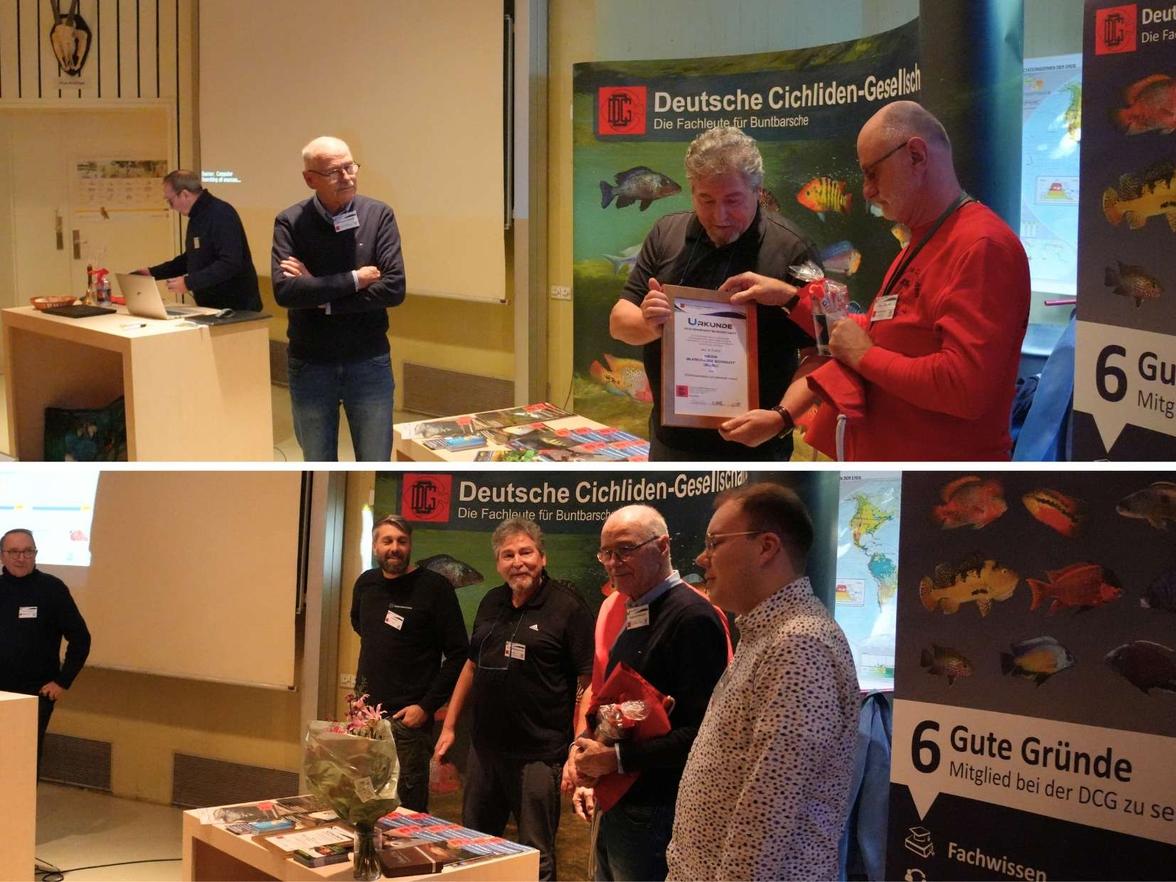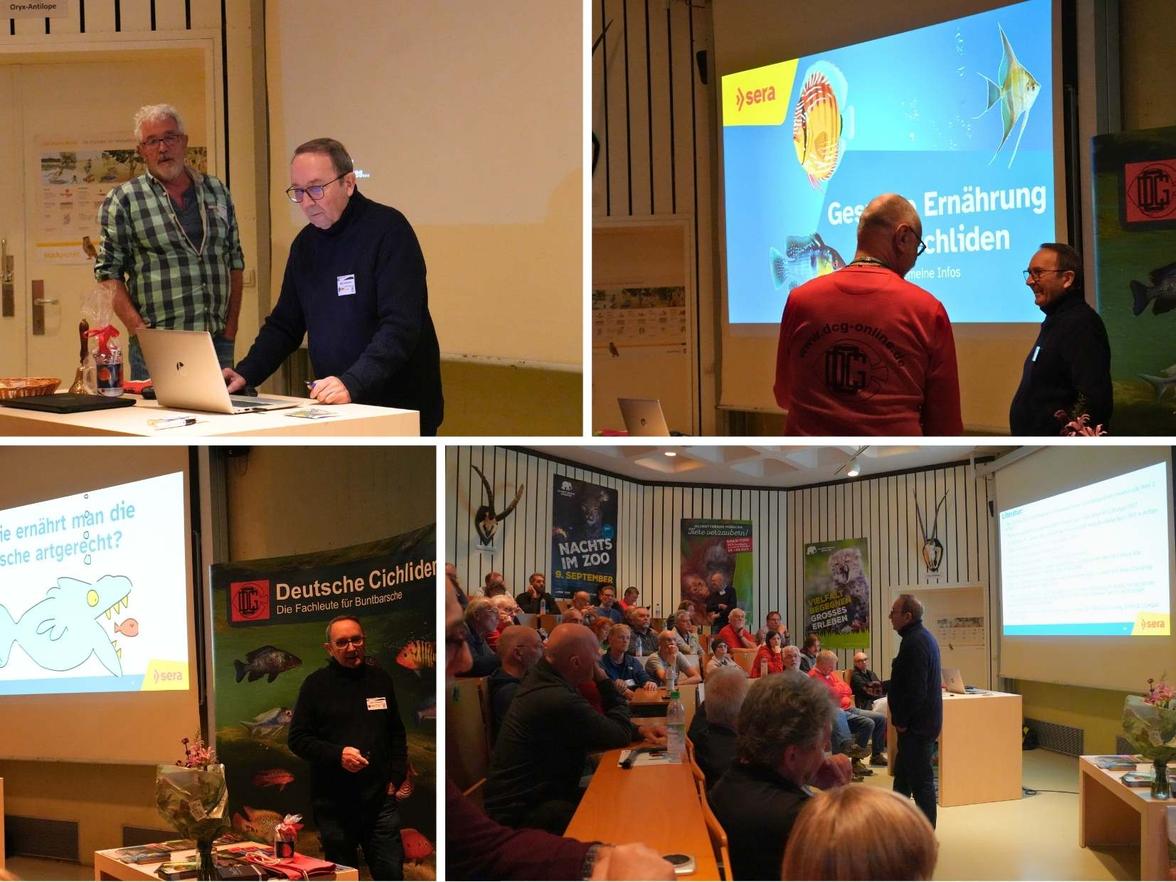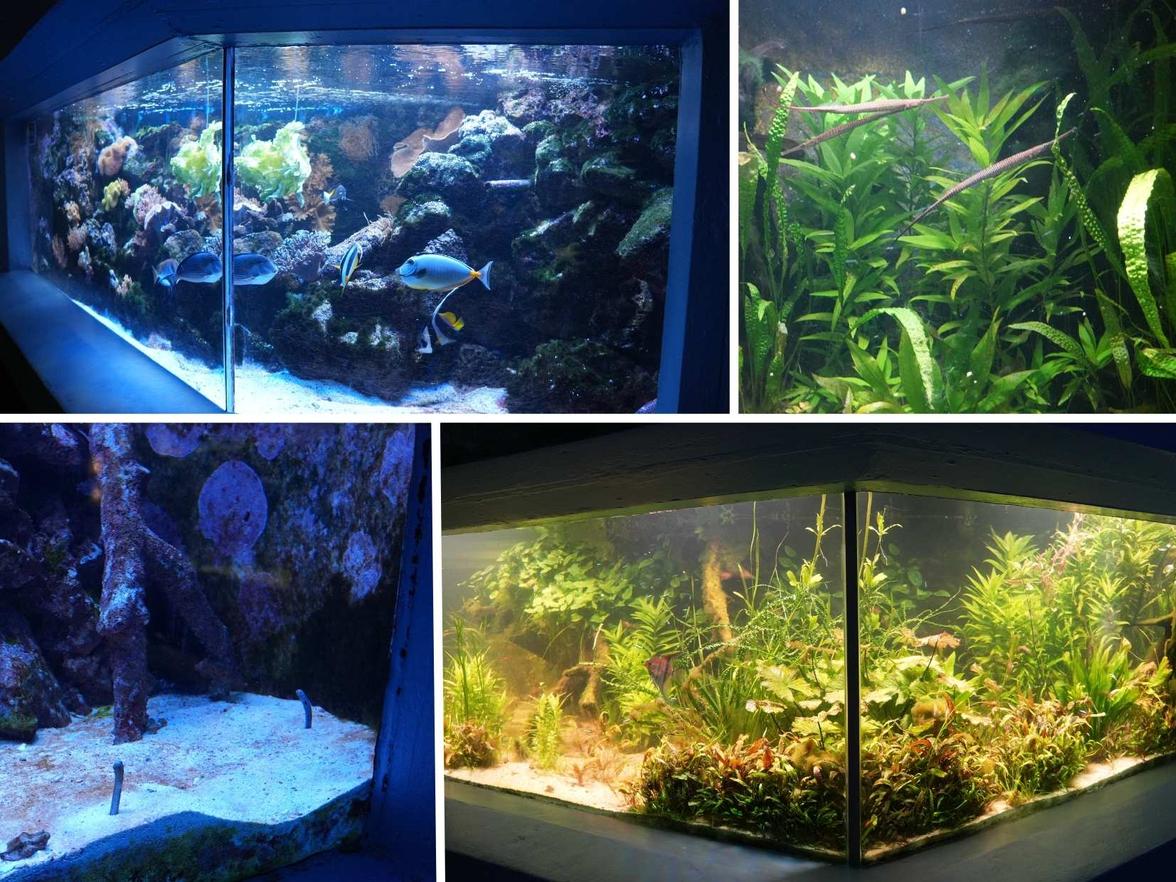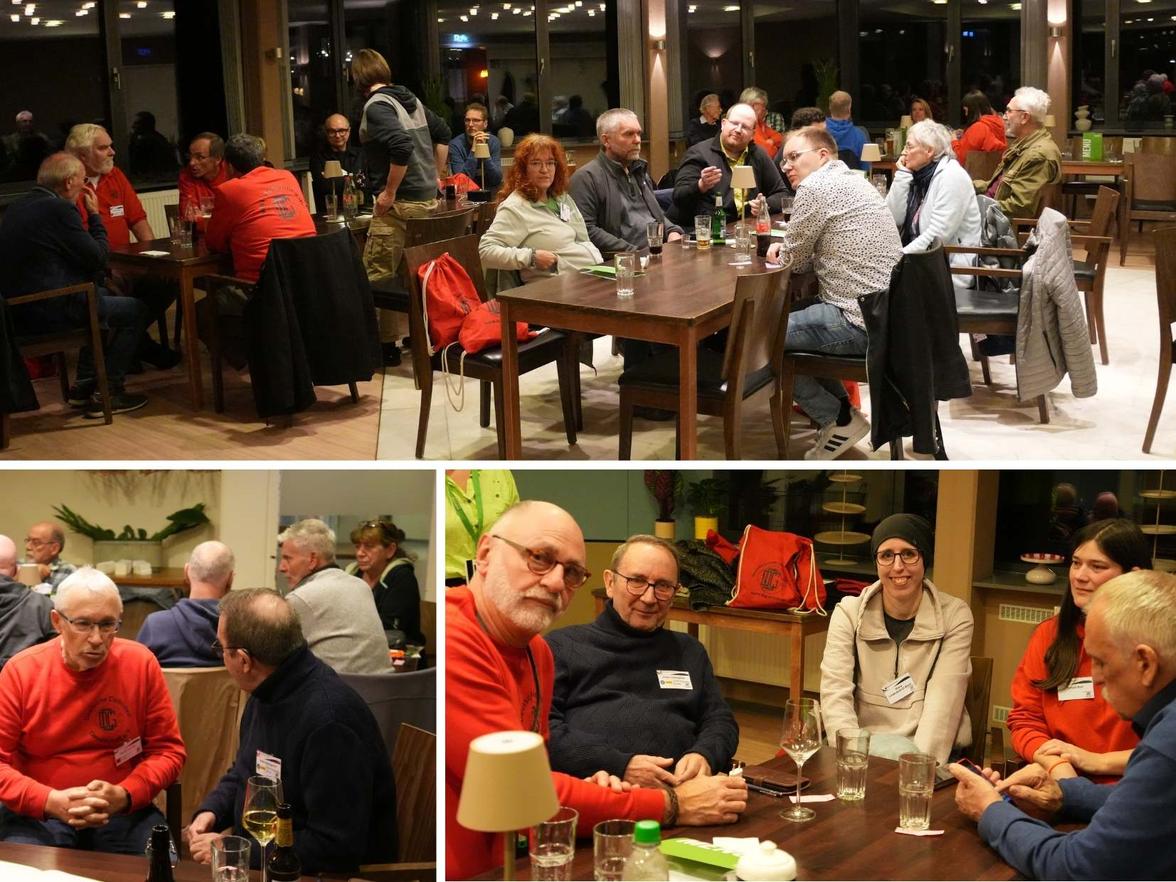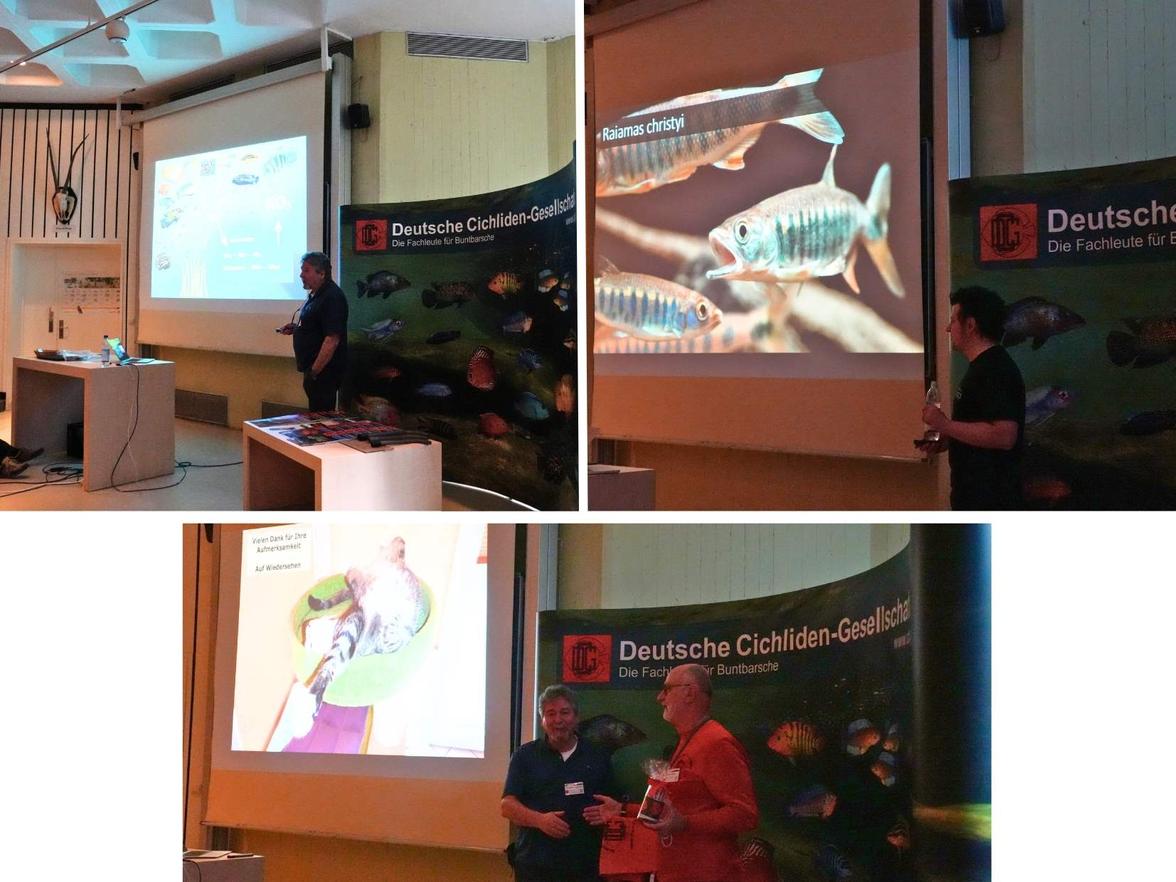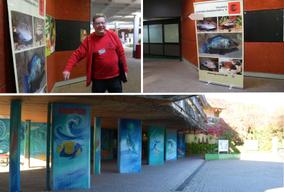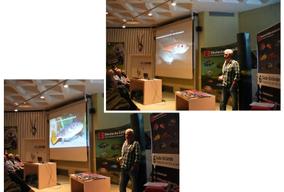Let's go through the prestigious conference of the German Cichlid Club (DCG) held at Münster Zoo. Read about the fascinating behaviors displayed by cichlids from Tanganyika and Central America, why aquarists should stop feeding beef heart, and what principles apply to proper nutrition and water conditioning. Find out why this international gathering was an aquarium whirlwind that excited even the most experienced breeders.
For some time now, I have been watching who is going to present at the DCG conference - the German Cichlid Club. After finding out that the venue is Münster Zoo, I immediately started considering whether and how to make the journey from the nearly 800 km distant Kutná Hora. Fortunately, at the same time, I was discussing collaboration with German colleagues from DCG, and the event itself came up.
On the Friday before the start of the conference, I got into a car with aquarist partner Adam Molin from Český Těšín, and we headed towards Nuremberg. There, we transferred to the organizer's vehicle, and before we knew it, we found ourselves in the beautiful surroundings of the Münster region. The accommodation was a short distance from the zoo, situated in a very nice rural setting.
I really enjoyed the friendly atmosphere among colleagues from all over Germany from the very beginning, and the initial nervousness quickly began to dissipate. After the introductory speech by the president of DCG (the German Cichlid Club), I presented on why the ForAquarist project was created and what we plan for the future. The support from the audience was palpable throughout the hall.
Cichlids from Lake Tanganyika - Stefan Pierdzig
The morning lecture dedicated to cichlids from Lake Tanganyika, subtitled "Amazing diversity of breeding patterns, breeding strategies, and feeding habits," was led by Stefan Pierdzig, who captivated everyone with his engaging storytelling and beautiful photographs of fish from his breeding. It is interesting how various species in the Lake Tanganyika area specialize in different habitats (living in various parts of the lake) and often have different breeding methods.
- Xenotilapia boulengeri, which can grow up to 20 cm - you can read more in a short portrait in the "Inspiration" section.
- Xenotilapia caudofasciata
- Xenotilapia papilio BÜSCHER 1990, which he also wrote about on the ForAquarist pages
- Gnathochromis permaxillaris will amaze with its protruding mouth - a mechanism reminiscent of "vacuuming" the bottom. This incredible fish guarantees unforgettable video footage. Stefan also filmed a successful breeding of young ones in a rooftop pool, which further excited the audience with excellent footage and interesting information.
- Triglachromis otostigma, the only representative of the genus Triglachromis, in the videos taken by the owner, demonstrated the rearing of young ones as a proper bi-parental mouthbrooder. An interesting additional piece of information was provided by the club president, who confirmed that they can change depth by up to 100 m in a short period. That is already an impressive ability, which must be appreciated not only by the listener, who dives and knows how difficult it is for a human body to adjust to much shallower depths.
- Trematocara stigmaticum is a direct specialist in depths and sometimes lives even deeper than the mentioned 100 meters. They are small fish that swim peacefully and then quickly dart out for food.
- Cyathopharynx sp. Kaubimba is known mainly for constructing large sandy craters, in which the fish then breed.
- Callochromis pleurospilus, a smaller fish around 8 cm.
Stefan supplemented his narration with videos from his breeding, and it soon became clear that the lecture could easily last much longer; it was interesting and drew the audience into the day.
Selected cichlids from Central America and their biotope - Uwe Werner
Uwe Werner has an immense archive of photographs and documentation, so we all waited with bated breath to see where the page count would stop. Uwe has traveled to almost every corner of Central America, and I suspect it will be hard to find cichlids that he hasn't captured, at least in their natural or domestic environments.
- The first catch was Cryptoheros spilurus, which is found from Guatemala to Nicaragua,
- followed by Cryptoheros chetumalensis from Belize and Guatemala, Cryptoheros cutteri..
- Amatitlania siquia, Amatitlania kanna from Rio Guarumo in Panama, Amatitlania sp. "Honduran Red Point", Amatitlania nanolutea, Amatitlania altoflava, Amatitlania myrnae, Amatitlania septemfasciata from the Atlantic side, but also individuals from the Pacific side, Amatitlania sajica from Costa Rica
- Herotilapia multispinosa, which inhabits Nicaragua and Costa Rica
- Panamius panamensis and Panamius sp. "Rio Sambu" from Panama
- Thorichthys maculipinnis and Thorichthys meeki from Mexico
- Theraps irregularis from Mexico and Guatemala
- Herichthys carpintis from Mexico
- Amphilophus citrinellus from Nicaragua and Costa Rica
- Parachromis managuensis from Nicaragua and Costa Rica and as far as eastern Honduras
- Parachromis dovii from Nicaragua and Costa Rica and as far as Honduras
- Petenia splendida from Mexico, Belize
and then we moved on to Cuba with Nandopsis ramsdeni, at which point I stopped taking notes and let myself be freely swept away by a flood of colorful photographs and descriptive storytelling.
The time schedule was soon exceeded, and the lecture continued. In the end, the final count stopped at 164 slides. To summarize, this lecture was an aquarium fish feast that did not allow the audience to rest.
Honorary membership - Burkhard Schmidt
The organizers took the break to present an honorary membership to a long-time aquarist who inspires and actively helps with breeding primarily cichlids - Mr. Burkhard Schmidt, known as Bubu. He received a framed certificate, a photographic portrait, and a beautiful bouquet for his wife.
However, the break was far from over, as the local leader of the aquarium club reported on how local children are inspired by aquaristics and how they collaborate on breeding fish.
Healthy diet in cichlids - Dieter Untergasser
After Uwe's demanding lecture, which required a lot of concentration, the presentation by the well-known personality immediately revived us, and we eagerly anticipated what we would learn.
Optimal nutrition depends on the type of fish and must primarily consider what their food is in the wild.
Optimal nutrition depends on the type of fish and on what the fish eats in the wild.
If an aquarist does not choose an appropriate diet, it pollutes the aquatic environment up to 3-4 times more than if they had the correct food.
The lecture began with types of feeding according to fish. We learned what the typical characteristics are for each group: based on external appearance and how the internal organs are arranged, including, for example, the length of the intestine:
- Carnivor - Carnivore
- Faunivor - Animal-eating other animals
- Piscivor - Animal-eating fish
- Insectivor - Insect-eater
- Herbivor - Plant-eater
- Omnivor - Omnivore
- Limnivor - Animal that feeds on fine sediment or a mixture of algae, cyanobacteria, bacteria, and small invertebrates that form on stones and the bottom
Nutritional errors are one of the main causes of the most common problems in ornamental fishkeeping!
Dieter Untergasser strongly warned against feeding beef heart, which has, for example, 200 times more collagen (20% of the serving) than larvae. A large part of this food is not digested, and feeding beef heart can lead to the proliferation of bacteria and pollution of the water. It is therefore unsuitable for fish.
Tips for proper feeding of aquarium fish:
- For frozen food, it is strongly recommended to keep track of where (country, location) it was packaged.
- For dried spirulina tablets, the aquarist should verify that the composition actually contains percentages of spirulina.
- If a container of dry food is opened, it should be fed within 3 months. After that, the nutritional value is already completely different. Each serving should ideally be fed within 2-3 minutes.
Conversely, the positive effects of live food were highlighted with precise comparisons of the value of its composition.
The Saturday concluded with a tour of the local aquarium and a joint dinner with a raffle and pleasant entertainment.
In the shadow of the horse tetra – Breeding and rearing of West African cichlids, tetras, barbs, and catfish - Dr. Stanislav Kislyuk
On Sunday, the first lecture was opened by this young presenter with perhaps the longest name of a fish I have seen so far, and he proudly mentioned that he made his wife learn it before he married her :-) So for the curious, it is Microstomatichthyoborus bashforddeani. Then he focused on:
- Distichodus deccemaculatus and teugelasi (he now has a ten-year-old one)
- Nannocharax fasciatus
Another interesting point was the information about the use of so-called wedge tanks (Keilbecken) made of glass so that the eggs are protected from being eaten by the parents. Then we continued on an interesting journey through the fish species:
- Phenacogrammus auratiacus living in the so-called "black water" and bred using classic rain simulation.
- Phenacogrammus sp. "Makoua Orange" and Phenacogrammus sp. "Makoua Orange Mini"
Nannopetersius lamberti, which are very susceptible to problems when laying eggs.
- Enteromius hulstaerti are undemanding and can tolerate temperatures from 12°C-30°C, but they thrive best at temperatures of 20°C-22°C.
- Raiamas christyi have a sort of growth on their nose, which probably serves to attract food at night, but this is more of a guess.
- Opsaridium sp. "Sangmelima"
- Chiloglanis micropogon
Finally, we were informed about representatives of the family Cichlidae Gobiocichla ethelwynnae and Rubricatochromis sp. "Ankasa"
Overall, the lecture was excellently conceived and the photographs were breathtaking.
Filtration and water treatment - Dr. Andreas Spreinat
The president of the German Cichlid Club, Dr. Andreas Spreinat, prepared several fundamental questions regarding water and its influence on animals and plants. He then elaborated them into a whole presentation, in which he also presented visual demonstrations of solutions, including the preparation of filtration.
In 1970, a book titled 222x how and why* was published in then Czechoslovakia, which can still answer many questions for many aquarists today. Similarly, in Germany, another book Boshafte Aquarienkunde by Erich Schaller** was published in that same year, which the presenter mentioned several times and seems to be an excellent guide on how to think about aquaristics and how to solve many situations by oneself.
Conclusion
It was a pleasure to participate in such a well-prepared conference in such a friendly environment. The lectures and the entire organization were not only appreciated by me but also excited others. So it is no wonder that the ranks of DCG members grew after the event. And not only that: all who participated share an experience that is unforgettable, unique, and that an aquarist cannot help but cherish. Therefore, even despite the long journey I undertook, I do not regret not having visited Münster itself or having only gone through a small part of the zoo. This Symposium was with a big S, not just because of the substantial names in German!
References:
*ZUKAL, Rudolf and Vladimír SADÍLEK. 222x how and why: Questions and answers from aquaristic practice. Prague: Self-help, 1970. (approx. 271 p.).
**SCHALLER, Erich. Boshafte Aquarienkunde. Stuttgart: Kernen, 1970.
